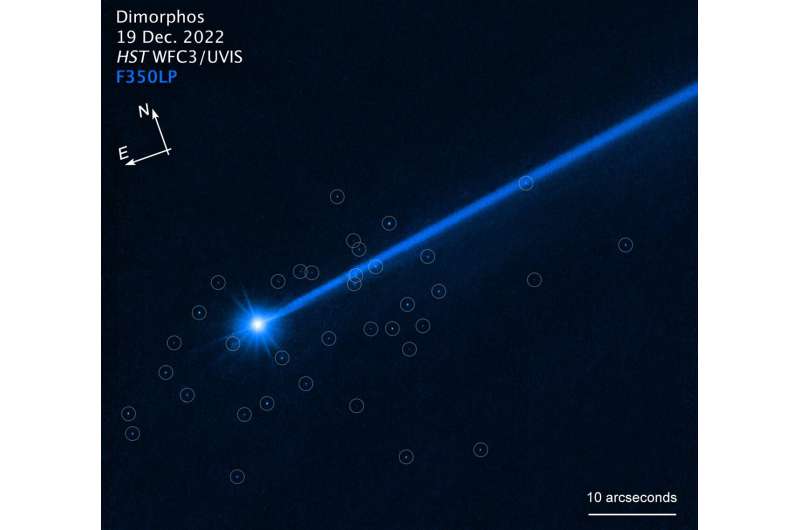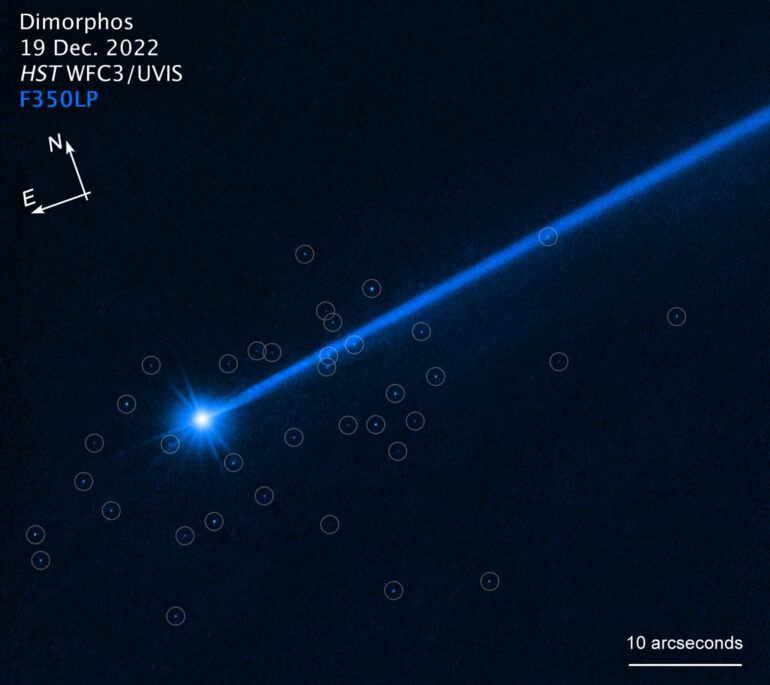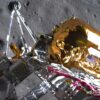Wayward asteroids present a real collision hazard to Earth. Scientists estimate that an asteroid measuring several miles across smashed into Earth 65 million years ago and wiped out the dinosaurs, among other forms of life, in a mass extinction. Unlike the dinosaurs, humanity can avoid this fate if we begin practicing how to knock an Earth-approaching asteroid off course.
This is trickier than how it has been depicted in science fiction movies like Deep Impact. Planetary scientists first need to know how asteroids were assembled. Are they flying rubble piles of loosely agglomerated rocks, or something more substantial? This information would help provide strategies on how to successfully deflect a menacing asteroid.
As a first step, NASA did an experiment to smash into an asteroid to see how it is perturbed. The DART (Double Asteroid Redirection Test) spacecraft impact on asteroid Dimorphos happened on September 26, 2022. Astronomers using the Hubble Space Telescope continue following the aftermath of the cosmic collision.
A surprise is the discovery of several dozen boulders lifted off the asteroid after the smashup. In Hubble pictures they look like a swarm of bees very slowly moving away from the asteroid. This might mean that smacking an Earth-approaching asteroid might result in a cluster of threatening boulders heading in our direction.
The popular 1954 rock song “Shake, Rattle and Roll,” could be the theme music for the Hubble Space Telescope’s latest discovery about what is happening to the asteroid Dimorphos in the aftermath of NASA’s DART (Double Asteroid Redirection Test) experiment. DART intentionally impacted Dimorphos on September 26, 2022, slightly changing the trajectory of its orbit around the larger asteroid Didymos.
Astronomers using Hubble’s extraordinary sensitivity have discovered a swarm of boulders that were possibly shaken off the asteroid when NASA deliberately slammed the half-ton DART impactor spacecraft into Dimorphos at approximately 14,000 miles per hour.
The 37 free-flung boulders range in size from three feet to 22 feet across, based on Hubble photometry. They are drifting away from the asteroid at little more than a half-mile per hour—roughly the walking speed of a giant tortoise. The total mass in these detected boulders is about 0.1% the mass of Dimorphos.

Image of the asteroid Dimorphos, with compass arrows, scale bar, and color key for reference. The north and east compass arrows show the orientation of the image on the sky. Note that the relationship between north and east on the sky (as seen from below) is flipped relative to direction arrows on a map of the ground (as seen from above). The bright white object at lower left is Dimorphos. It has a bluish dust tail extending diagonally to the upper right. A cluster of blue dots (marked by white circles) surrounds the asteroid. These are boulders that were knocked off the asteroid when, on September 26, 2022, NASA deliberately slammed the half-ton DART impactor spacecraft into the asteroid as a test of what it would take to deflect some future asteroid from hitting Earth. Hubble photographed the slow-moving boulders using the Wide Field Camera 3 in December 2022. The color results from assigning a blue hue to the monochromatic (grayscale) image. © Image: NASA, ESA, David Jewitt (UCLA), Image Processing: Alyssa Pagan (STScI)
“This is a spectacular observation—much better than I expected. We see a cloud of boulders carrying mass and energy away from the impact target. The numbers, sizes, and shapes of the boulders are consistent with them having been knocked off the surface of Dimorphos by the impact,” said David Jewitt of the University of California at Los Angeles, a planetary scientist who has been using Hubble to track changes in the asteroid during and after the DART impact.
“This tells us for the first time what happens when you hit an asteroid and see material coming out up to the largest sizes. The boulders are some of the faintest things ever imaged inside our solar system.”
Jewitt says that this opens up a new dimension for studying the aftermath of the DART experiment using the European Space Agency’s upcoming Hera spacecraft, which will arrive at the binary asteroid in late 2026. Hera will perform a detailed post-impact survey of the targeted asteroid.
“The boulder cloud will still be dispersing when Hera arrives,” said Jewitt. “It’s like a very slowly expanding swarm of bees that eventually will spread along the binary pair’s orbit around the sun.”
The boulders are most likely not shattered pieces of the diminutive asteroid caused by the impact. They were already scattered across the asteroid’s surface, as evident in the last close-up picture taken by the DART spacecraft just two seconds before collision, when it was only seven miles above the surface.
Jewitt estimates that the impact shook off two percent of the boulders on the asteroid’s surface. He says the boulder observations by Hubble also give an estimate for the size of the DART impact crater. “The boulders could have been excavated from a circle of about 160 feet across (the width of a football field) on the surface of Dimorphos,” he said. Hera will eventually determine the actual crater size.
Long ago, Dimorphos may have formed from material shed into space by the larger asteroid Didymos. The parent body may have spun up too quickly or could have lost material from a glancing collision with another object, among other scenarios. The ejected material formed a ring that gravitationally coalesced to form Dimorphos. This would make it a flying rubble pile of rocky debris loosely held together by a relatively weak pull of gravity. Therefore, the interior is probably not solid, but has a structure more like a bunch of grapes.
It’s not clear how the boulders were lifted off the asteroid’s surface. They could be part of an ejecta plume that was photographed by Hubble and other observatories. Or a seismic wave from the impact may have rattled through the asteroid—like hitting a bell with a hammer—shaking lose the surface rubble.
“If we follow the boulders in future Hubble observations, then we may have enough data to pin down the boulders’ precise trajectories. And then we’ll see in which directions they were launched from the surface,” said Jewitt.
The findings are published in The Astrophysical Journal Letters.
More information:
David Jewitt et al, The Dimorphos Boulder Swarm, The Astrophysical Journal Letters (2023). DOI: 10.3847/2041-8213/ace1ec
Provided by
ESA/Hubble Information Centre
Citation:
Hubble sees boulders escaping from asteroid Dimorphos (2023, July 20)



